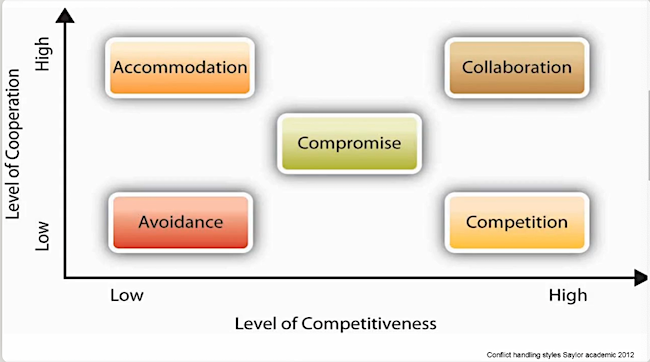Dr Julie Crabtree, a psychologist from Zebra Psychology discussed the five styles that people bring to conflict in this morning’s CBAA Conference session.
- Competition
- Avoidance
- Compromise
- Accommodation
- Collaboration
When there is conflict that is causing problems in the station, “you must face it, don’t avoid it,” she says. Use proactive conflict resolution, which begins by trying to get people to put their shields down so that they can hear what is being said.

“When someone has their defences up they won’t hear what you have to say. Part of the success of difficult conversations is to get people to put their shields down.
“We all have defence mechanisms but, as a manager or the person tasked with solving the problem, you need to find a way to reassure the person, so that they will be comfortable to put their defences down enough to hear your message.”
Begin conversations with kindness and hope and if necessary, vulnerability, she urges. “Be curious about the other person, be present through the conversation.”
Before having a difficult conversation, prepare well, write out how you will open the conversation and how you will approach it, don’t just wing it. “Listen, listen more, reflect back, ask open ended questions, it helps people relax so they can begin to hear you.”
Creative people are often insecure so Crabtree suggests that you should give them enough positive things to affirm them and let them know you are hearing them.
If the situation is difficult, one conversation may not be enough to solve the problem. “Finish the conversation with a clear message and clear next steps to take. Give them time to process the conversation, then meet again when they have had time to think about what was said.”
Working with volunteers takes particular skills. Payment is not what motives them, so a manager who will have a difficult conversation must make the effort to understand their motivation, then recognise and acknowledge it because this shows respect for them. Help them to solve the problem in their own way if possible, don’t jump to solve it yourself, if you can get through to them, they might find a better way to solve it than you would have done.
“People generally appreciate feedback if they feel respected and it is presented with kindness and fairness,” says Crabtree.
Of course there may be times when people are so fixed in their ways and have no capacity to change that they cannot change. If they are creating a toxic environment then you may have to pursue other processes and manage them out, for the sake of the rest of the team.

In the following session, the CBAA’s Strategy & Insights Specialist Heidi Martin discussed data driven research.
“Research is a waste of money if you don’t do something with it,” she said, urging people to know what they want to do with the research. Once data is gathered, take the time to understand what the data means and be willing to actually make changes that are based on that information.
“Without evidence, we’ve just got opinion.”
“Conversations just go around in circles until either the person with the highest authority makes a decision or nothing is done. It is better to have evidence based recommendations.”
She outlined three steps for good research.
Step 1 – Start with purpose, be sure you know what is the problem we are trying to solve.
Step 2 – Truly listen to your respondents, make the research short, concise and focused to what you need.
Step 3 – Craft the research for the audience. One size doesn’t fit all, it fits nobody, craft the research so that it is clearly focused to what you need to know.


